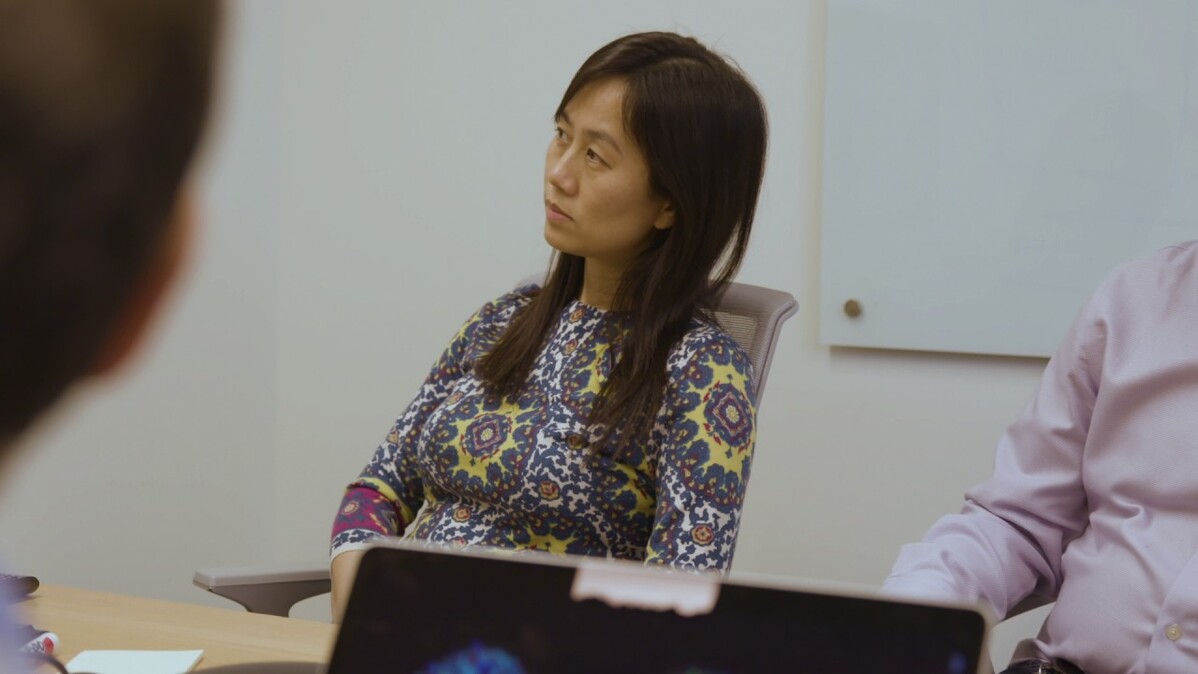Back in the 1950s, scientists created models of proteins using wires and blocks to visualize molecular machinery. The models helped them understand how proteins work and interact with drugs. Later, computer graphics replaced wire models, adding richness and precision but losing a dimension.
Now drug hunters at Novartis are working to bring that third dimension back, only instead of using wires and blocks, they are using virtual reality (VR), which immerses users in a digitally rendered alternate world.
Viktor Hornak, an investigator in the Global Discovery Chemistry department at the Novartis Institutes for BioMedical Research (NIBR), is driving an effort to adapt VR tools for use in the drug design process. He and his colleagues recognize a potential for VR to help drug hunters more quickly improve the molecular makeup of a new drug by smoothing communications between scientists and enabling them to see biological machinery more clearly.
 VIDEO
VIDEO
From games to science
Hornak and his colleagues decided to give VR a whirl the instant the technology became available on the consumer market in 2016. For about USD 700, they had all they needed to get started…with gaming.
But for drug discovery, the off-the-shelf technology was about as interesting as a smart TV with no internet connection. “It’s just the hardware,” says Hornak. “There’s no software available to support our research.”
So Hornak partnered with IT experts at Novartis to develop software that understands how to translate information about a protein’s structure – the location of every atom in the molecule and the shape of its machinery – into a 3-D virtual view. With this software, the team can use VR headsets to immerse themselves in the protein and take a walk around.
“We spend a lot of time looking at structures and trying to understand how they interact with our drugs. In VR, I’m the size of the drug and I’m looking at the protein interactions around me,” says Hornak. “You can’t do that within the constraints of a flat computer screen. A 3-D view is more natural.”
These molecular walks are useful during the early stages of drug design, when chemists and biologists need to exchange a lot of ideas about a protein’s interactions with a potential small molecule drug. These conversations can be tricky because the researchers come from different scientific backgrounds and don’t always speak the same language.
With the prototype VR system, scientists can walk through a chemical structure together. Seeing the same things at the same time helps them more rapidly settle on the best ideas for tweaking a drug’s chemical makeup so that it fits more easily into a protein’s machinery and more effectively alters the protein’s function to slow or stop a disease process.
Narrowing down the options is valuable because chemists have thousands of molecules to choose from when improving candidate drugs. The more information they have about how well a small molecule fits, or how it might fit better, the more likely they are to choose an option that is safer or more effective at fighting disease.
“I was blown away the first time I got a chance to climb inside a protein and walk around,” says José Duca, Executive Director of the Computer-Aided Drug Discovery group in Global Discovery Chemistry. “VR allows us to see these molecules in ways we’ve never seen before. There is still much to be done, but the technology has the potential to give us insights that could speed the drug discovery process.”
Pushing the field
Hornak is hoping that developers of molecular visualization tools will jump onto the VR bandwagon. Only a few have, because VR hardware is still new and the industry is fragmented, with more than one platform competing for dominance much the way VHS and Betamax fought to win the home video market.
In addition, on the heels of VR is AR (short for augmented reality), another means of 3-D visualization. While AR is not as immersive as VR, it is more collaborative because the virtual objects appear inside the viewer’s real environment rather than in an isolated virtual world.
By developing an in-house prototype VR system for drug discovery at this early stage, Hornak and his colleagues are able to demonstrate the potential value of VR to developers of existing 2-D molecular visualization tools. “We would prefer to be leaders in the process and help shape its future than to wait,” he says.
Ultimately, VR could have a very wide reach, especially if developers rally behind it and begin writing VR applications the way they write apps for the mobile phone. “This is a new way of doing things, not just for science, but for all kinds of interactions,” says Hornak.



